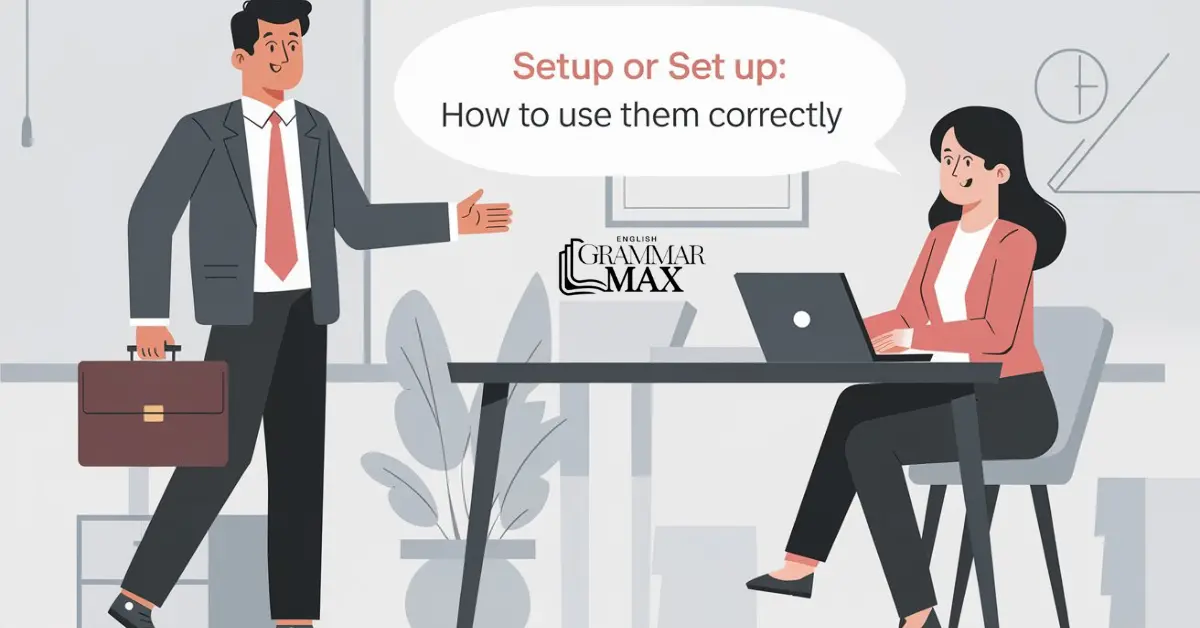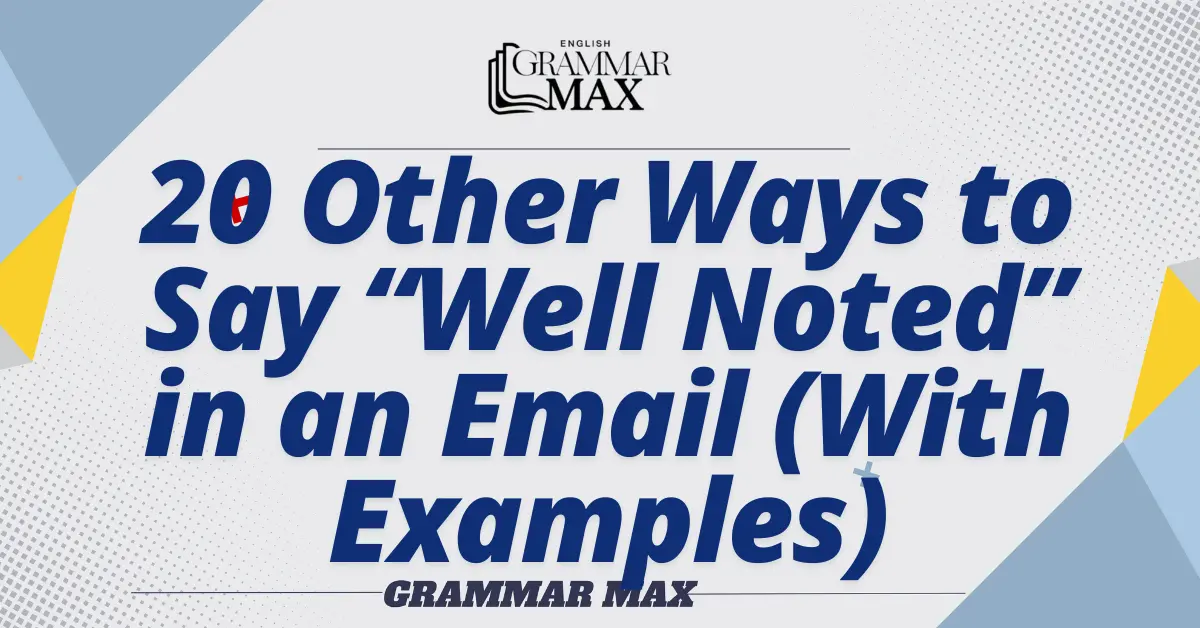English grammar can sometimes be puzzling, especially when words like “setup” and “set up” look so similar but serve entirely different roles. Many people mix them up, but understanding their correct usage is vital for clear and professional communication. This guide will help you grasp the difference between setup and set up, with practical examples, usage tips, and tricks to remember when to use each one.
Whether you’re writing a setup guide, preparing for a meeting, or crafting an email, knowing how to differentiate these terms will make your writing sharper and more precise. Let’s break down their meanings and functions to ensure you’re never confused again.
Setup vs. Set Up: Understanding the Difference
The difference between setup and set up lies in their grammatical roles and meanings. Setup is a noun (and sometimes an adjective), while set up is a phrasal verb. This distinction is crucial for proper usage.
For instance, if you’re describing an arrangement like “The setup of the room was perfect for the presentation” you’re using the noun form. On the other hand, if you’re describing the act of arranging something Like “I need to set up the room for the presentation” you’re using the verb form.
An easy way to remember this is:
- Setup refers to the thing (noun).
- Set up refers to the action (verb).
Let’s delve deeper into each term to solidify your understanding.
What is Setup?
Setup is primarily a noun, meaning an arrangement, configuration, or system that has been established. It can also function as an adjective to describe something related to an arrangement or process. For example:
- As a noun: “The network setup was efficient and secure.”
- As an adjective: “The setup guide was clear and detailed.”
Setup is commonly used in various contexts, such as events, technology, and systems. Here’s a table to explain its meaning further:
| Context | Example | Explanation |
| Event Arrangement | “The setup for the wedding took hours.” | Refers to the event’s physical arrangement. |
| Technology Configuration | “The printer setup was easy to complete.” | Refers to the system’s configuration. |
| Instructions/Manual | “Follow the setup guide for installation.” | Refers to the guide for arranging or installing. |
Setup as a Noun
When used as a noun, setup refers to the arrangement or organization of something. For example:
- “The office setup was designed for collaboration.”
In this role, setup emphasizes the final result of an arrangement. It’s often used in technical contexts like software installations, event planning, or system configurations.
Setup as an Adjective
As an adjective, setup modifies a noun to show its purpose or function. For instance:
- “The setup screen walked users through the installation process.”
- “A detailed setup manual ensured everything ran smoothly.”
This form is frequently seen in technical or instructional contexts.
What is Set Up?
Set up is a phrasal verb that means to arrange, prepare, or organize something. It describes the process or action of creating an arrangement. For example:
- “I will set up the chairs before the meeting.”
- “She needs to set up the new software on her laptop.”
Set Up in Action
Unlike setup, which refers to the completed arrangement, set up focuses on the steps taken to achieve that arrangement. Here are some common situations:
- Arranging a Meeting: “Can we set up a meeting for next week?”
- Preparing Equipment: “We need to set up the projector before the presentation.”
- Organizing an Event: “The team worked together to set up the event.”
| Verb Phrase | Meaning |
| “Set up the room.” | Action of arranging the room. |
| “Set up the network.” | Action of configuring the network. |
Is “Set-Up” a Word?
The term set-up, written with a hyphen, is less common in modern English. It was traditionally used as a substitute for setup as a noun. For example:
- “The set-up for the play was elaborate.”
However, this form is considered outdated in American English. In most cases, you should use setup or set up depending on the context. Using set-up may still be acceptable in informal or British contexts but is rarely seen in professional writing.
How to Use Setup
When using setup, remember it acts as a noun or an adjective. Its role is to describe arrangements, configurations, or systems. For example:
- “The setup instructions were clear and easy to follow.”
- “The meeting setup included refreshments and seating arrangements.”
Common phrases like setup screen and setup guide often appear in technology-related discussions. These terms describe tools or resources that aid in arranging or installing something.
How to Use Set Up
Set up is always a verb phrase. It describes an action, whether it’s organizing, assembling, or arranging something. For example:
- “I need to set up my workspace before starting the project.”
Here’s a list of set up synonyms that might help you vary your writing:
| Synonym | Context |
| Organize | Arranging events or materials |
| Assemble | Putting parts together |
| Prepare | Getting ready for an event or task |
| Establish | Forming a system or process |
Quick Test: Setup or Set Up?
Test your understanding with these sentences. Fill in the blanks with either setup or set up:
- “Can you ___ the decorations before the guests arrive?”
- “The ___ of the conference was professional and efficient.”
- “Follow the ___ manual for detailed steps.”
- “We need to ___ the chairs before the meeting starts.”
Answers:
- set up
- setup
- setup
- set up
Frequently Asked Questions
Which one is correct, setup or set up?
Setup is a noun/adjective, while set up is a verb. Use them based on the context of your sentence.
Is it stage setup or set up?
Stage setup is correct when referring to the arrangement, while set up is used for the action of arranging the stage.
How do you use setup in a sentence?
Example: “The setup of the conference room was ideal for the presentation.”
Is it current setup or set up?
Current setup is correct when referring to an existing arrangement.
Conclusion
Mastering the difference between setup and set up is crucial for clear and professional communication. Use setup as a noun or adjective to describe arrangements or configurations. Use set up as a verb to describe the action of arranging or organizing. Avoid using the outdated hyphenated form, set-up, unless in informal contexts.
By remembering that setup refers to the thing and set up refers to the action, you can confidently apply these terms in your writing. Whether you’re working on a setup guide, planning to set up a meeting, or referring to a meeting setup, this guide ensures you’ll never be confused again.

William Henry is a writer for Grammar Max, a blog that focuses on synonyms and phrases. He loves exploring the quirks of the English language and enjoys helping readers improve their vocabulary. William’s articles are easy to read, fun, and full of useful tips for anyone looking to better understand and use English. Whether you’re a student, a professional, or just someone interested in language, William’s writing on Grammar Max makes learning about words and their meanings simple and enjoyable.





